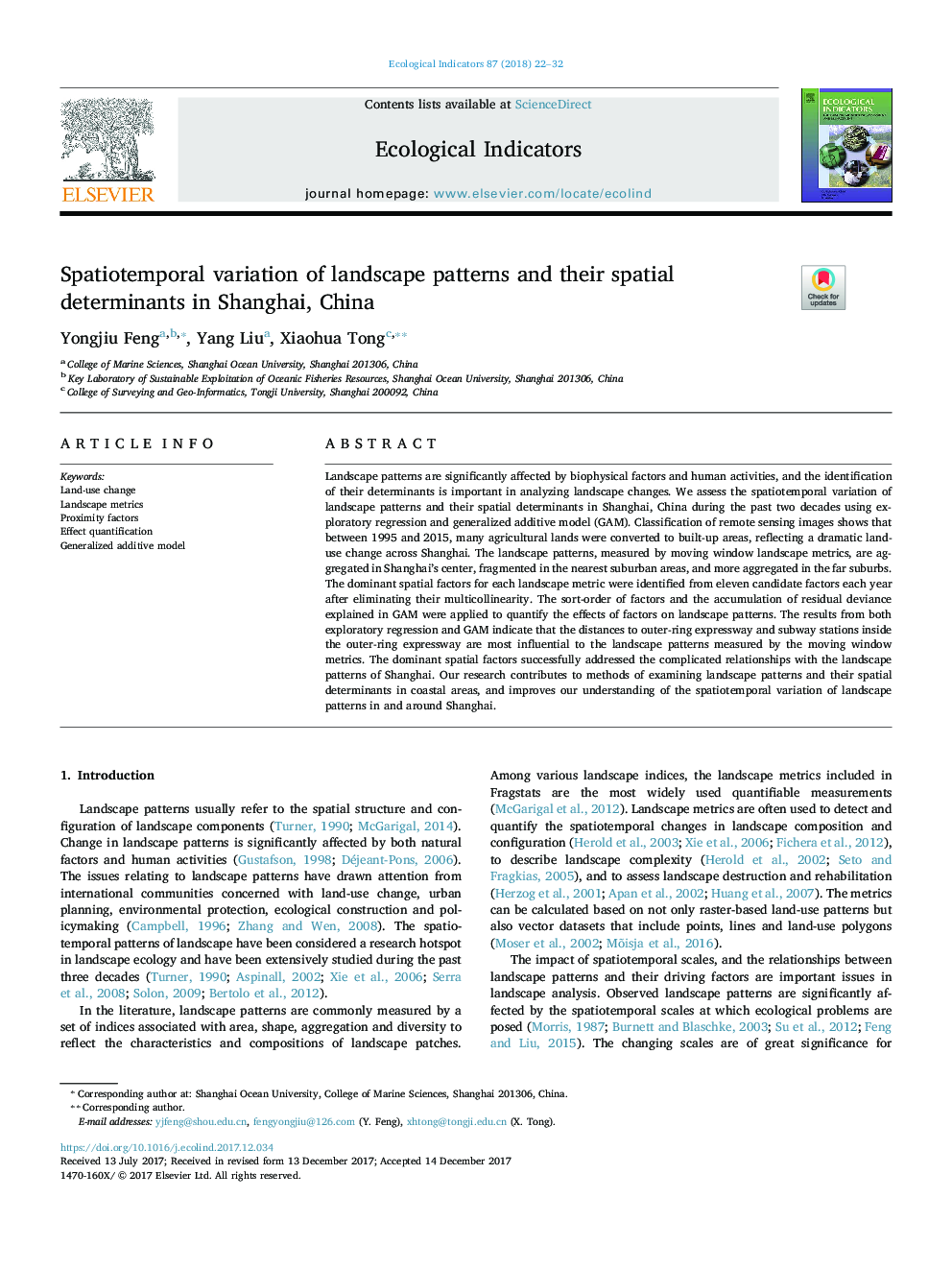| Article ID | Journal | Published Year | Pages | File Type |
|---|---|---|---|---|
| 8845560 | Ecological Indicators | 2018 | 11 Pages |
Abstract
Landscape patterns are significantly affected by biophysical factors and human activities, and the identification of their determinants is important in analyzing landscape changes. We assess the spatiotemporal variation of landscape patterns and their spatial determinants in Shanghai, China during the past two decades using exploratory regression and generalized additive model (GAM). Classification of remote sensing images shows that between 1995 and 2015, many agricultural lands were converted to built-up areas, reflecting a dramatic land-use change across Shanghai. The landscape patterns, measured by moving window landscape metrics, are aggregated in Shanghai's center, fragmented in the nearest suburban areas, and more aggregated in the far suburbs. The dominant spatial factors for each landscape metric were identified from eleven candidate factors each year after eliminating their multicollinearity. The sort-order of factors and the accumulation of residual deviance explained in GAM were applied to quantify the effects of factors on landscape patterns. The results from both exploratory regression and GAM indicate that the distances to outer-ring expressway and subway stations inside the outer-ring expressway are most influential to the landscape patterns measured by the moving window metrics. The dominant spatial factors successfully addressed the complicated relationships with the landscape patterns of Shanghai. Our research contributes to methods of examining landscape patterns and their spatial determinants in coastal areas, and improves our understanding of the spatiotemporal variation of landscape patterns in and around Shanghai.
Related Topics
Life Sciences
Agricultural and Biological Sciences
Ecology, Evolution, Behavior and Systematics
Authors
Yongjiu Feng, Yang Liu, Xiaohua Tong,
